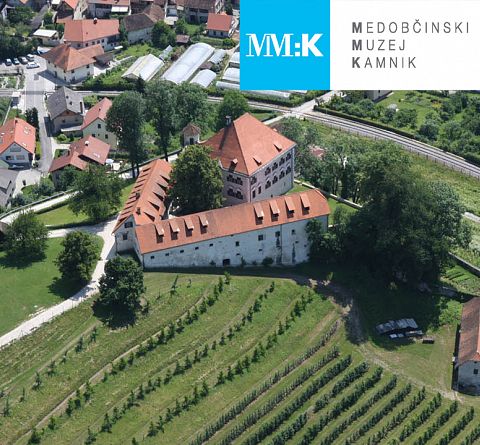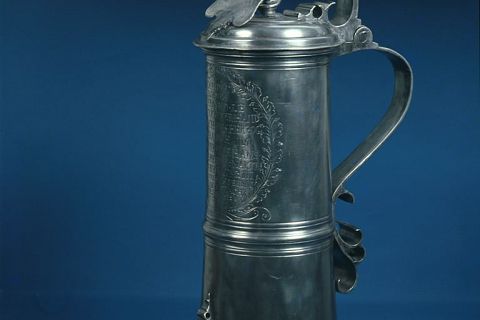The leather’s guild mugs, tin, 1725
A typical form of drinking tin for special occasions, widely used in the 17th and 18th centuries, was guild mugs. They were used at special guild ceremonies, such as the reception of an assistant among the masters. In the Intermunicipal museum Kamnik, we also store, among others, guild mugs used by leathers. At the top of a jug, a young man’s animal skin is held on which two lions are engraved, holding a cross-curved leather knife for cleaning the skin. Above them is the year 1725. On the abdomen of the jug, all the leather masters included in the guild are listed. This and other jugs were bought from the collection of Josip N. Sadnikar.
In the 17th and 18th centuries, the guilds received a new form, since they were joined not only by craftsmen of the same profession from one city, but from several cities, markets or from all over the country. Then the principle was won that the number of masters and even assistants in one place should be precisely defined and limited. This led to the inheritance, sale and pledging of the right to trade, or whether it was related to the possession of a particular property. The guild regulations governed the life and religious duties of masters, assistants and apprentices. With the arrival of the French and the establishment of the Illyrian Provinces (1809-1813), the principle of economic freedom was introduced. The guilds were abolished and the craft could be carried out by anyone who reported it to the authorities and paid a craft tax.




